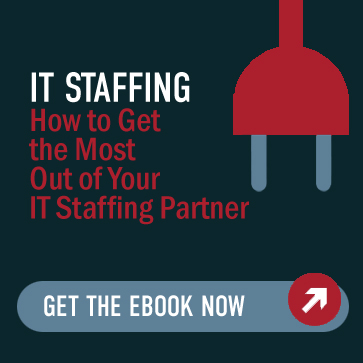 In reality, labor is still the most important tool in any IT department. So, staffing for IT becomes critical to ensuring that an IT manager can service his or her company and/or clients.
In reality, labor is still the most important tool in any IT department. So, staffing for IT becomes critical to ensuring that an IT manager can service his or her company and/or clients.
Specifically related to IT staffing is the use of temporary or contingent labor for augmenting an IT department. This can be a great way to gain access to specific skills, or ramp up without hiring directly onto the company’s payroll. However, when the flood gates are opened, it can mean work to keep track of staffing suppliers and the reasons they have been engaged.
Here are 4 quick tips on maximizing your IT staffing partnership:
1. Which Staffing Suppliers to Use and How to Measure
Why a company uses particular IT staffing suppliers is important because it takes time and energy to engage with suppliers and the return on that investment should be good hires. But that’s not always the case.
Managing the “why” along with measuring performance is important. There will always be cases where suppliers fill a specific need or become “favored” providers. However, to optimize an IT staffing supply chain and get to the optimum number of suppliers (see the next section) there should be several criteria in place.
There are two categories of suppliers to use: Smaller Niche Suppliers and Larger Suppliers. Both have their pros and cons. Small niche suppliers have an advantage in that they can usually specialize in one area and focus their resources on that area. This can be limiting yet it also provides a clear indication of what skills they can be used for. On the other hand, large suppliers can cover more area geographically, as well as, with skill areas. They have more resources, however, they generally have more clients and are spread out among these clients.
Regarding measuring a supplier’s performance, there are several general measurements that can apply to any staffing supplier, but for IT suppliers there are a few additional measures to be aware of. Here are a few of the most important ones to consider:
- Time to fill and/or time to respond
- Quality
- Process
- Turnover
- Alignment
- Proactive Recruiting
2. Understanding Supply and Demand
To adequately plan for talent needs, it’s important for IT hiring managers to keep an eye on changes in skill supply and demand. Fluctuations in the labor market may mean that skills will be harder to find, or may be more expensive. This will impact projects on two important axes: cost and time. This will also impact the number of suppliers needed to fulfill the IT department’s requirements.
There are several methods, both formal and informal, for keeping tabs on supply and demand. They include:
- Salary Surveys
- Job Postings
- Human Resources
- Recruiters
Regarding the supply side – how many IT staffing suppliers are enough?First, It will depend on the company and the types of IT positions. However, some things to consider like resources, skill coverage, and geographic coverage help decide on the appropriate number to ensure coverage, quality and responsiveness.
For the demand side – why limit the number of suppliers? Several reasons include the time and energy coordinating all suppliers, time from hiring managers and visibility.
The optimal number of suppliers may change over time, but with careful measurements, adjustments can be made when necessary.
3. Speaking the Same Language –Translating IT into Recruiting Terms
One of the most important issues related to recruiting for IT positions is the communication of requirements. A good recruiter will place emphasis not only on the technical qualifications of the candidate, but also the fit with the project, manager or company.
4. Incentivizing IT Staffing Suppliers
Most IT staffing suppliers, and the recruiters who work there, are compensated on the hourly rate of the temporary IT worker. Bottom line: They get paid for placements of IT workers. The IT staffing company makes more money for more placements, as do individual recruiters. But there are also other factors.
Incentivizing IT suppliers is really about good business. But especially in IT, there are several factors that can help an IT hiring manager get the best from suppliers. Here are a few suggestions:
- Competitive Pay Rates
- Realistic Lead Times
- Volume, Higher Rates, or Both
- Less Competition
- Good Communication
It’s clear, from many years of observation, that the closest client-supplier relationships work the best. As with any business relationship, it must be mutually beneficial.
In conclusion, the key to any staffing program is to design a proactive, not reactive, supply chain for talent acquisition. It’s no different with IT staffing. The key is to understand how staffing suppliers work and setup a process and program that allows for both the supplier and the IT hiring manger to be successful.
Want to know more about IT Staffing? Click on the image below to download the full eBook "How to Get the Most Out of Your IT Staffing Partner."




